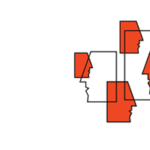Season 1 – Episode 30 – Food and Housing Insecurity: Higher Education
Food and housing insecurity are impacting college and university students at increasingly high rates. According to a 2022 study from the Hope Center for College, Community, and Justice, 38% of students at a two-year college and 29% of students at a four-year college reported experiencing food insecurity in the last 30 days. In a 2022 report from the Community College Survey of Student Engagement (CCSSE), more than a quarter of respondents, approximately 27%, reported experiencing the inability to pay either rent or mortgage in full within the last year. While COVID-19 and the impacts of the pandemic played a role in heightened food and housing insecurity for college and university students, other factors contributed, such as rising costs across the country. While some federal, state, and local resources are available, food and housing insecurity are often overlooked, leaving institutions to take creative approaches to meet the needs of students.
Episode Transcript
Click to expand/collapse
Darren Gaddis: From CITI Program, I’m Darren Gaddis and this is On Campus. Today, what is housing and food insecurity resources available to students and how to better resource college and university campuses? I spoke with Mary Haskett, Professor of Psychology at North Carolina State University, where she studies the impact of family context on children’s social emotional adjustment. In addition to her primary areas of expertise, Dr. Haskett is co-chair of the North Carolina State Steering Committee on Student Food and Housing Security. As a reminder, this podcast is for educational purposes only. It is not intended to provide legal advice or guidance. You should consult with your organization’s attorneys if you have questions or concerns about the relevant laws and regulations discussed in this podcast. Additionally, the views expressed in this podcast are solely those of the presenter. Hi Mary. Thank you for joining me today.
Mary Haskett: Thanks for having me. I’m looking forward to the conversation.
Darren Gaddis: To get us started, what is food insecurity?
Mary Haskett: So food insecurity is most often defined using the USDA, the Department of Agriculture Survey, and it’s a combination of not having sufficient, safe and nutritious food and not having access to the resources to get that food that’s needed.
Darren Gaddis: And to follow up on that, what is housing insecurity?
Mary Haskett: Yeah. The definition of housing insecurity is a little less well accepted, but it tends to include the condition of not having affordable, reasonable quality housing. Homelessness is defined by two different federal definitions. Both of those definitions include the lack of a fixed, regular and adequate nighttime residence or staying in a shelter. The Department of Ed also includes the condition of being doubled up and living in hotels and motels when a person has no other option. So those are the definitions that are most often used.
Darren Gaddis: With those definitions in mind, how are these two topics interconnected?
Mary Haskett: Yeah, broadly they both are closely tied to economic factors and poverty, and they’re both also tied to systems that historically have disadvantaged minoritized populations. In our research here on our college campus, we found that the likelihood of experiencing food insecurity was significantly higher for students who had previously been homeless compared to the rates of food insecurity for students who had been stably housed. So these two conditions do tend to go hand in hand.
Darren Gaddis: Why are these two issues of food and housing insecurity increasingly impacting college students?
Mary Haskett: There’s a number of factors that are converging to impact the ability of students to meet the cost of a college degree. First, and maybe most obvious is that cost arising and that includes the cost of tuition and fees and the cost of food and housing. Also, the loss of affordable housing in many areas has contributed. And then financial aid and scholarships have not kept pace with the increased cost. And of course, stagnant minimum wage contributes to that enormously. Another factor is that the estimated cost of attendance at many universities is unreasonably low and does not reflect the true cost of attendance. And then another factor is the accessibility of college to students that might not have applied to college a generation ago.
For example, at our university, we are increasing our outreach to students who are currently in community college. And we know from research that students who are in community colleges tend to be less well resourced in terms of the communities and families that they come from. So we have an increasing need among the higher ed population now. All of those factors are coming together to really impact our college students at increasing rates.
Darren Gaddis: And from your experience, what has the response been across the country to address issues of food and housing insecurity?
Mary Haskett: Well, the response has been highly variable. In some states, for example, California, they’re setting a good example for the rest of us in terms of pretty significant funding for their university and community college systems to address food and housing insecurity. There’s about 10 states that have enacted some legislation that requires every public institution of higher ed in those states to identify a single point of contact. So a person on those campuses that can assist students with basic needs. Lots of campuses across the country now have a food pantry. While that’s a good initial step, we know that food pantries are woefully inadequate to address the need so highly variable across the country in terms of addressing these challenges.
Darren Gaddis: From the work that you’ve done at NC State on food and housing insecurity, are you aware of any national resources that exist to assist students who might be facing food or housing insecurity?
Mary Haskett: That’s a great question. There are not a lot of national resources. Two that come to mind. There’s been some recent changes in legislation related to the FAFSA. The FAFSA is the Federal Application for Federal Student Aid, and there has been a recent act, the FAFSA Simplification Act, and that act removes some of the burdens placed on homeless and foster youth in accessing financial aid. So that has been a really positive change for students experiencing homelessness. And then another resource that comes to mind during COVID, food stamp benefits or SNAP benefits were extended in terms of eligibility to college students. And I’m not up to date on the current eligibility criteria, but that’s an area in terms of federal changes that could really reduce food insecurity for college students. But there is not a great deal at the national level yet.
Darren Gaddis: In your opinion, what could institutions be doing on a local level to address food and housing insecurity for college and university students?
Mary Haskett: I can provide a few recommendations. I think the first recommendation would be to collect data at your local campus so that you can have an understanding of what the current needs are. There are studies across the country, but there’s nothing like having local data to convince your donors and your higher education administrators of your local need. There are surveys that are available that could be shared across campuses. I’m happy to share the survey that we used on my campus. I think also determine whether the estimated cost of attendance at your institution is reasonable given the real cost of living in your area. I would say to work on increasing access to on-campus jobs for students that are well paid, as well as paid internships. I would recommend that there be priority on campus housing for homeless and foster care students. I would encourage university housing to remain open during school breaks. A lot of campuses close their dorms or residence halls when the campus closes for courses, and that is a really high risk time for homelessness among students.
I would also say partner with other institutions to share resources. For example, in my community, there is a university that has a waiting list for university housing and right down the street, there’s another institution that recently closed a dorm because of under enrollment. So I think if universities could think outside their own campus, there may be resources to share. I also suggest that universities and colleges hire a full-time professional advocate and case manager with expertise in both higher ed and local and national benefits so that every university has a point of contact for students.
Darren Gaddis: How could the federal government also play a role in addressing food and housing insecurity for college and university students?
Mary Haskett: I think there’s a lot that our national government could do. Just a few recommendations. I would suggest that there be a national policy requiring universities to have a single point of contact. We feel like those single points of contact make a real difference for students. I think I mentioned before that there are several states that have state level requirements, but we could certainly benefit from having that requirement at the national level as well. And then I think working toward SNAP benefits that are more easily accessible for college students would be a great move forward.
Darren Gaddis: With all those information in mind, what else should we know about food and housing insecurity for college and university students?
Mary Haskett: Yes, thanks for that question. I think one of the most important things for people to know and understand is that food and housing insecurity on college campuses is a common experience. We found on our university of over 35,000 students that 15% had been homeless in the course of a year. So we’re talking about a large number of students. It’s becoming increasingly common. I also think it’s important to understand that students who are struggling with basic needs are some of our brightest, most highly motivated students. They are working multiple jobs and while they’re working, they’re looking for additional jobs. They are taking out loans, they are getting scholarships, they’re doing everything possible to get their college degree. So I think universities and communities could do more to support these students as they’re working so hard to get their degrees and to make a contribution.
Also, I think it’s important to know that students who are struggling financially and with basic needs are much more likely to share their resources than students who aren’t experiencing those basic needs insecurity. So on our campus, we found that students who had been homeless and food insecure were those who were most likely to share their own food, to share their housing with others, to share their transportation, to loan money to others. When we support students who are struggling, we’re really supporting their whole entire community because they are sharing what they have. So I hope that encourages folks to step up. Thanks for that question.
Darren Gaddis: Mary, thank you for joining me today.
Mary Haskett: Thank you. I appreciate it.
Darren Gaddis: Be sure to follow, like and subscribe to On Campus with CITI Program to stay in the now. I also invite you to review our content offerings regularly as we are continually adding new courses and webinars that may be of interest to you. All of our content is available to you anytime through organizational and individual subscriptions. You may also be interested in CITI Program’s, Effectively Communicating Research Results to Non-Scientific Audiences webinar. Please visit the CITI Program’s website to learn more about all of our offerings.
How to Listen and Subscribe to the Podcast
You can find On Campus with CITI Program available from several of the most popular podcast services. Subscribe on your favorite platform to receive updates when episodes are newly released. You can also subscribe to this podcast, by pasting “https://feeds.buzzsprout.com/1896915.rss” into your your podcast apps.
Recent Episodes
- Season 1 – Episode 29: Admissions: Undergraduate, Graduate, and Transfer Students
- Season 1 – Episode 28: Workforce Development in STEM
- Season 1 – Episode 27: Academic Career Pathways (Part 2)
- Season 1 – Episode 26: Academic Career Pathways (Part 1)
Meet the Guest

Mary Haskett, PhD – North Carolina State University
Mary Haskett, PhD is a professor in the Department of Psychology at NC State University. Her primary area of research is causes and consequences of adverse experiences on the social-emotional development of young children. She also examines college student basic needs and co-founded a host home program for local students.
Meet the Host
Darren Gaddis, Host, On Campus Podcast – CITI Program
He is the host of the CITI Program’s higher education podcast. Mr. Gaddis received his BA from University of North Florida, MA from The George Washington University, and is currently a doctoral student at Florida State University.








